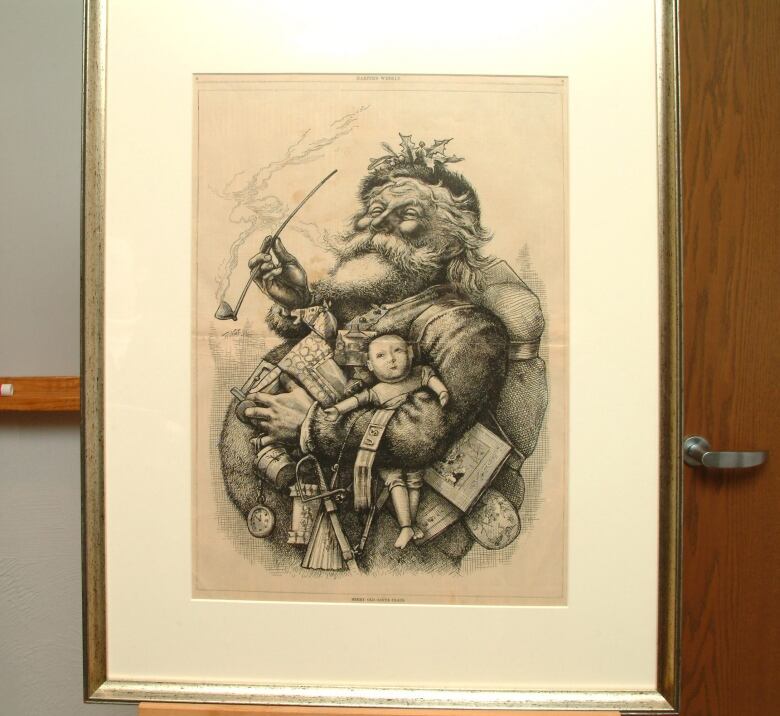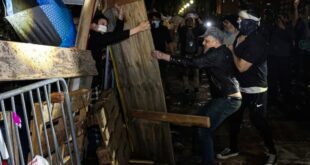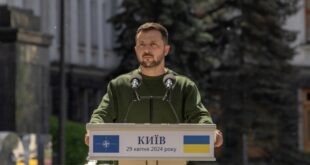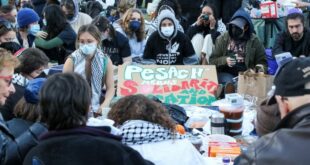Famous holiday poem is credited to Clement Clarke Moore, but some claim true author is Henry Livingston Jr.

Note: This article was originally published in 2017
'Twas the Night Before Christmas, but according to lore,
This beloved poem was not written by Clement Clarke Moore.
At least that's the opinion of Mary Van Deusen, who claims her great-great-great-great-great-grandfather, Henry Livingston Jr., a poet and farmer from a Poughkeepsie, N.Y., is the true author of the iconic holiday verse.
For years, Van Deusen has been doing her best to try to convince the public that her unheralded ancestor deserves credit for the legendary prose.
"To me, it's just righting a wrong," she said. "I feel there's something fundamentally wrong with people stealing other people's work."
It's a tough charge, but Van Duesen has some academic ammunition to back up her claim. Just last year, MacDonald Jackson, English professor emeritus at the University of Auckland in New Zealand, published his book Who Wrote The Night Before Christmas? Analyzing the Clement Clarke Moore vs. Henry Livingston Question.
"The best evidence favouring Livingston is hard to explain away," he wrote in an email to CBC News.

Additionally, in 2000, forensic linguist and Vassar College English professor Donald Foster concluded in his book, Author Unknkown, that Livingston authored the poem.
The case has also sparked at least two jovial mock trials in Troy, N.Y. — one in 2013, which ended in a hung jury, and another the following year in which a jury ruled that Livingston was the real author.
Yet despite the support for Livingston's authorship, Van Deusen, who has created a densely detailed website about the issue, says it still makes her "very, very sad that [the] truth isn't easy to get out there."
The Moore camp
Not surprisingly, there are those who dispute the professors' and Van Deusen's take.
Responding to Foster's book, Stephen Nissenbaum, professor emeritus of history at the University of Massachusetts, wrote an article in defence of Moore back in 2001.
Seth Kaller, an expert on authenticating historical documents, said the matter was in "Obama birth certificate territory."
"Yes, there is a controversy…. The controversy is why so many people are still questioning the authenticity of something indisputably proven to be true."
(Kaller also hired noted skeptic and paranormal investigator Joe Nickell, who also came to the conclusion that Moore is the author.)
"There is literally no contemporary evidence that Livingston ever claimed to be or was the author. He didn't, and he wasn't," said Kaller, who at one time owned an original manuscript of the poem said to be in Moore's handwriting.

What we know for sure
What we do know is this: Account of a Visit from St. Nicholas — as it was first called — was originally published, anonymously, in New York's Troy Sentinel newspaper on Dec. 23, 1823.
Not only did the poem become a hit, but according to the New York Historical Society, its description of old St. Nick "permanently connected St. Nicholas to Christmas and led to our idea of Santa Claus." (It also established the names of Santa's eight tiny reindeer — all except for Rudolph.)
For 14 years, the author of the poem would remain unknown. Then in 1837, American author and poet Charles Fenno Hoffman, editor of The New-York Book of Poetry, outed his friend Moore, a New York scholar and author, as the writer. In 1844, Moore would finally acknowledge authorship when he included the poem in his collection entitled Poems.
Moore was a professor of Middle East and Greek literature and theology who wrote on a variety of subjects and had many of his works published, including a two-volume A Compendious Lexicon of the Hebrew Language.
Livingston, according to the Poetry Foundation, published "occasional and light verse in regional journals and his poems were often published anonymously or under the pseudonym R."
Moore and Livingston never met, and the latter died in 1828, years before Moore would ever take credit for the poem.

The story of how the poem came to be remains a source of controversy.
As the story goes, Moore wrote it as a Christmas present for his two daughters. He apparently told the New York Historical Society that a "portly, rubicund Dutchman in the neighborhood" was his model for St. Nicholas.
How the poem ended up at the Troy Sentinel is not exactly clear, but some claim a friend of the Moore family sent it in.
Yet the Livingston family claimed that the very same poem had been told to Livingston Jr.'s own children years earlier, in 1807.
Linguistic analysis
In part, Donald Foster used linguistic analysis to back up those claims, while MacDonald Jackson based his conclusions on statistical analysis. He compared the writing styles of both Livingston and Moore and contrasted their rates of using common words and phoneme pairs — words that differ only by one sound.
"Their rates of use are largely beyond a writer's conscious control," Jackson wrote in his book. "They distinguish Moore's verse from Livingston's, and they classify The Night Before Christmas with the latter."
For Moore to have written this poem, he would have to "slipped into a style that was not only atypical of his own verse but utterly typical of the very man who, according to his descendants, was the true author."
As well, Jackson argued, Moore was a dull "moralist, a pedagogue and satirist" who did not have the "verve, imagination, humour, whimsy" of Livingston to write such a poem.
'Quite likely that the matter can never be settled'
But Kaller believes this is all nonsense. Those same traits could be said about Livingston, he said.
And the case for Moore is simple:
"He wrote four manuscript copies that he signed; people who knew him while he was alive credited him with authorship. He published a book claiming to be the author, and there is absolutely nothing that anybody related to the Livingston claims has ever found that provides any proof that Livingston claimed to write it, or did write it."

As for the statistical analysis done by Jackson, Kaller said the professor's data is constrained by the limited written texts available.
He said Jackson is unfair to Moore, choosing poems written by Livingston that, when compared with The Night Before Christmas, would lead to the conclusion he wrote the poem.
"Want to read some of Moore's poems? I can cherry pick a few, after which you would say, of course Moore wrote A Visit."
The controversy has swirled since the 19th century, and Jackson doesn't see an end to it any time soon.
"It's quite likely that the matter can never be settled."
*****
Credit belongs to : www.cbc.ca
 MaharlikaNews | Canada Leading Online Filipino Newspaper Portal The No. 1 most engaged information website for Filipino – Canadian in Canada. MaharlikaNews.com received almost a quarter a million visitors in 2020.
MaharlikaNews | Canada Leading Online Filipino Newspaper Portal The No. 1 most engaged information website for Filipino – Canadian in Canada. MaharlikaNews.com received almost a quarter a million visitors in 2020.







